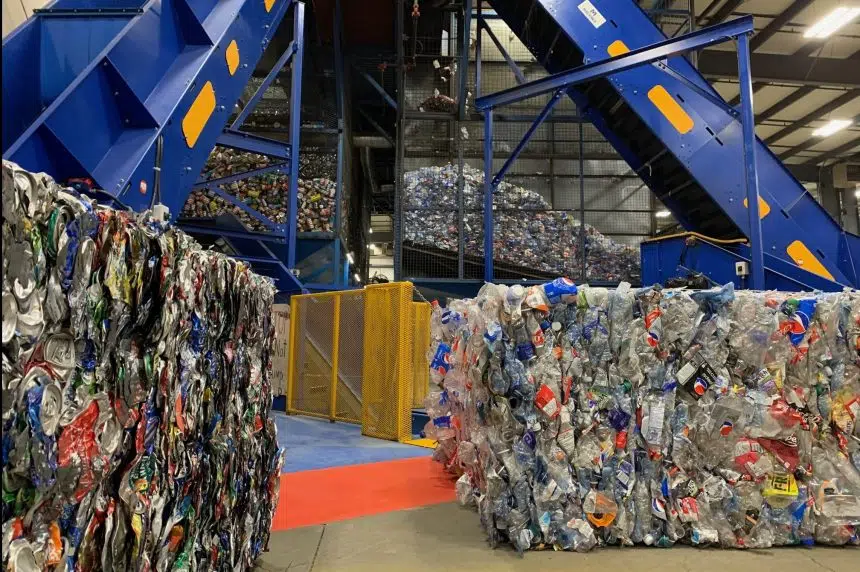Roughly 60 garbage bags per person per year wind up in Saskatchewan landfills.
The province has a new plan to cut that number in half in the next 20 years.
Saskatchewan’s Solid Waste Management Strategy outlines six main goals and several broad commitments which Environment Minister Dustin Duncan describes as a “road map” for working with communities, industries and families to reduce waste.
Speaking Thursday at the SARCAN processing facility in Regina, Duncan said the strategy will highlight some of the diversion programs the province does well, such as SARCAN’s beverage recycling rate, and will apply some of the lessons to other areas of waste diversion.
“Part of this is recognizing that there is a value to our waste in the things that go into our landfills, whether that be through diverting them to recycling programs and actually finding a market and we know from time to time there are some challenges with those markets,” Duncan said.
The environment minister also highlighted potential innovations for capturing methane produced from organic waste to use it to produce energy. He said the government wants to work with municipalities and residents to recognize the cost of landfills and to see there might be positive benefits on reducing waste.
Richard Porter is the chair of the Solid Waste Management Advisory Committee, which developed the strategy after meetings with municipalities, First Nations communities and industry leaders.
He was encouraged to see high turnouts at those sessions, where he said people were very concerned about the issue of waste and wanted to see change. The next steps will be educating everyone about the importance of following the plan.
“If we can have people understand the necessity to do what we’re asking them to do and that there will be a return on it, then we can start to have some movement forward,” Porter said.
Porter admitted there is definitely a resistance to change, but pointed to innovation as a way of reducing waste.
“Before, we always dug a hole for garbage and 60 per cent of the garbage that you pick up is probably organic and doesn’t need to go in the hole, and nor should it,” he said. “With innovation, hopefully we don’t need the hole and I think that’s what we need to work towards, to have less landfills in the province and all over.”
When considering the cost of starting up recycling or composting programs, Porter encouraged local leaders and residents to look at the big picture instead of assuming landfills are the cheapest option.
“It might be the cheapest way right now, but when you’re done decommissioning and putting that chunk of land back into production, maybe it’s not as cheap as what you thought. And maybe we need to put some of that money up front and use technology and diversion from the landfills,” Porter explained.
One of the common messages the committee heard was about the need for more standard regulations and consistent enforcement.
Along with a focus on education and awareness about waste management practices, the strategy goals include reviewing and updating the Municipal Refuse Management Regulations to provide a modern regulatory system.
The government has also set a specific target to implement a landfill operator certification program which will require all landfill operators to be certified by 2025.
As well, the strategy aims to encourage the trend of forming regional waste management authorities to share costs.
The next steps on the timeline of the strategy include finalizing a composting guidance document and updating all landfill guidance documents by this spring. Over this year, the government will launch a review of stewardship programs including one for household paper and packaging and to engage with restaurants and food stores to reduce food waste.
The government is also expected to review its own day-to-day activities to find ways to reduce waste and to decommission all provincial park landfills.
The strategy aims to develop a diversion program for non-residential waste by the spring of 2022 and to recommend development of Environmental Code chapters for transfer stations and composting facilities by 2023.
The strategy appears below.












